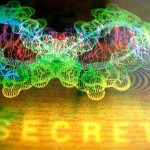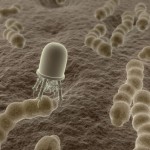
Wikimedia
In May 2009, the American Civil Liberties Union and the Association for Molecular Pathology filed suit, in the United States District Court for the Southern District of New York, against the United States Patent and Trademark Office and Myriad Genetics. The complaint pertained to patents that were granted on the BRCA1 and BRCA2 human genes that are mutations correlated to the increased risk of breast or ovarian cancer. Myriad Genetics designed a procedure to test for these mutations to indicate the likelihood of a woman developing either or both of the diseases. The complaint asserted that patents on genes should not be allowed because they are violative of § 101, patentable subject matter, of the Patent Act, namely all three of the judicially recognized exceptions to patentability: natural phenomena, laws of nature, and abstract ideas. Subsequently, the American Civil Liberties Union and the Public Patent Foundation filed a motion for summary judgment, in August 2009. On March 29, 2010, the District Court found that the isolated segments of DNA utilized for the diagnostic tests were “not markedly different from native DNA as it exists in nature” and held the patents granted to Myriad were not valid. Ass’n. for Molecular Pathology v. U.S.P.T.O., 702 F. Supp. 2d 181 (S.D.N.Y. 2010).
On July 29, 2011, the United States Court of Appeals for the Federal Circuit reversed the decision of the district court stating “the molecules as claimed do not exist in nature.” According to a report on msnbc.com, Bruce Wexler, a partner in the law firm Paul Hastings, commented “[t]he appeals court has now held that isolated DNA is patent eligible, and it recognized that isolated DNA has a different molecular structure than DNA as it exists in the body. That is a very significant result that is very important to the biotech industry.”
This decision is equally important to the future of the nanotech industry because the starting point for nearly all nanoparticle inventions is the same as biotech – nature. While it is well established that those materials found in nature are not patentable, the Federal Circuit has signaled its acknowledgement of the intellectual investment inherent in the advancement of science. There would have been seismic effects on the future of biotech and nanotech development had the district court’s decision been affirmed. For now, it is full steam ahead for the scientists and investors.
For further information, see an earlier post I wrote – Patents on Genes and the Future of Personal Nanomedicine.
Read the full Federal Circuit decision here: http://www.aclu.org/files/assets/10-1406.pdf



